Tips for how to install cabinets successfully. Learn how to hang kitchen wall cabinets and install island cabinets with these pro tips.
How to Install Cabinets Like a Pro
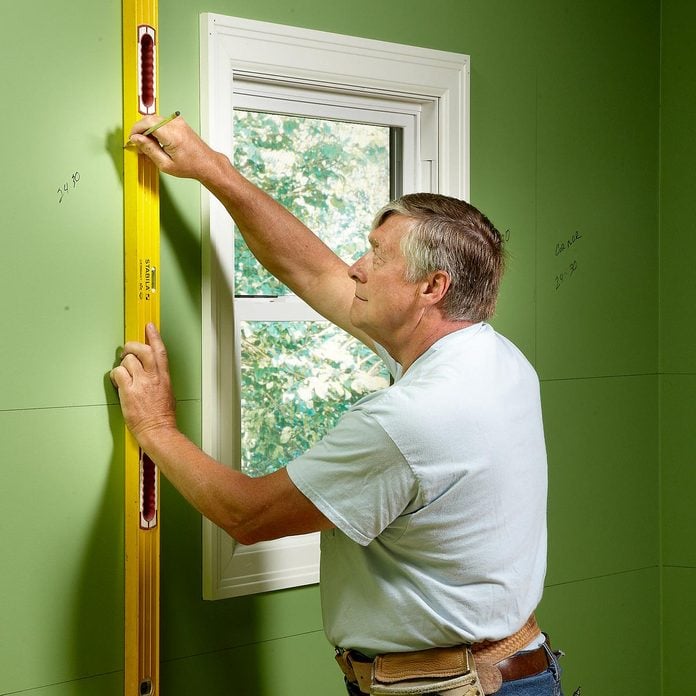
Mark Up the Wall First
A good cabinet installation starts with a good layout. Measure from the highest point in the floor and draw a level line marking the top of the base cabinets. Measure up 19-1/2 in. from that line and draw another line for the bottom of the upper cabinets. Label the location of the kitchen wall cabinets and appliances on the wall. Draw a vertical line to line up the edge of the first cabinet to be installed. Finally, mark the stud locations as you begin a how to install kitchen cabinets project.
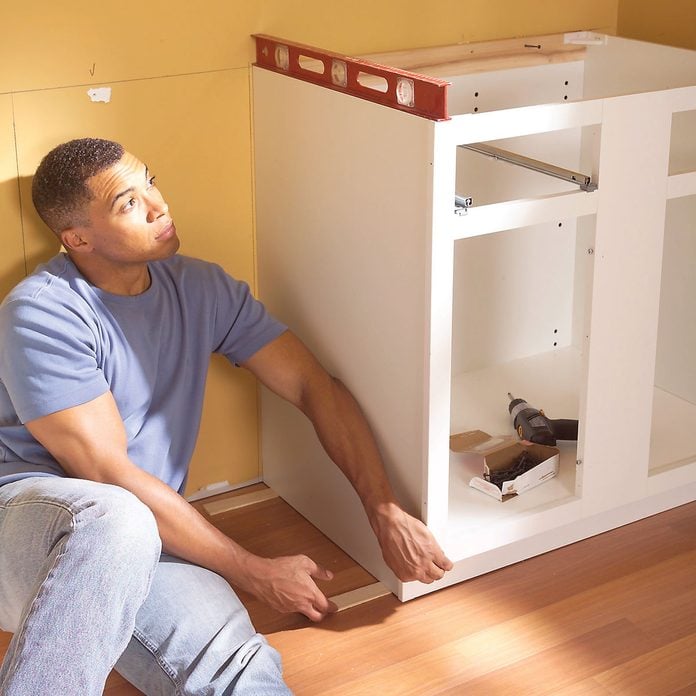
Position the First Cabinet
Set the first cabinet 1/4 in. from the positioning line and shim the base until the top is even with the horizontal line and level from front to back. Drive 2-1/2-in. screws through the back into the wall studs to anchor it.
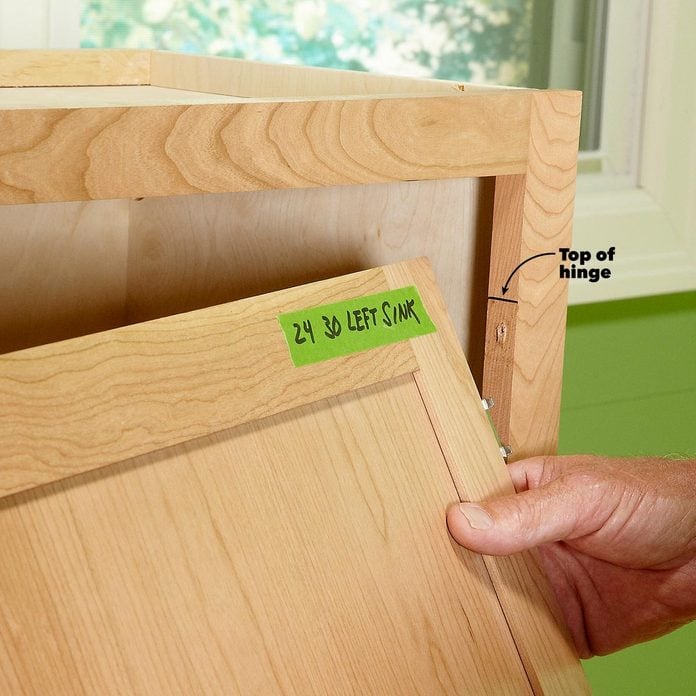
Remove Cabinet Doors and Drawers
We’ve all seen painting projects where the hinges and hardware are covered with paint and paint is slopped over drawer interiors. It’s tempting to leave the doors in place for painting as you begin your how to paint kitchen cabinets project, but you’ll get a much neater and more professional-looking job by removing them, as well as all the hardware. On many modern cabinets, drawer fronts can be removed from the drawer by backing out a few screws. But if your drawer fronts are part of the drawer and can’t be removed, use masking tape to cover the drawer sides and bottom if you don’t want to paint them.
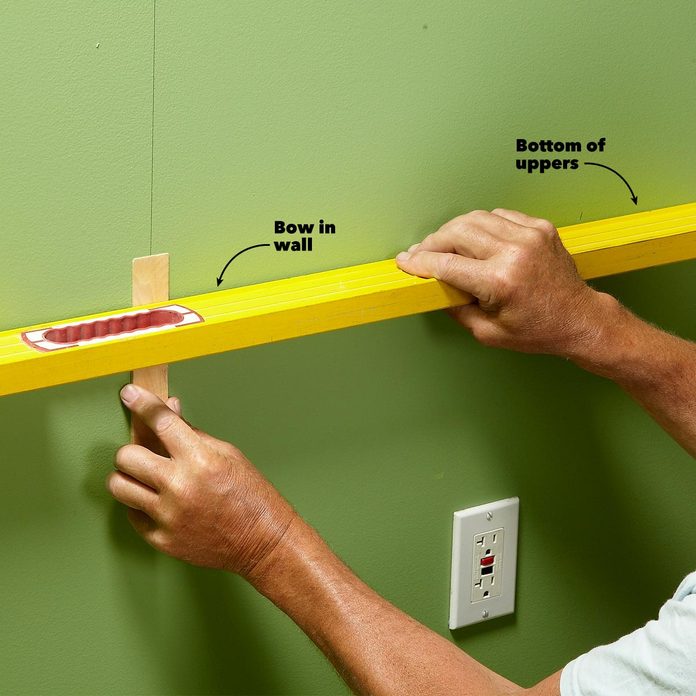
Shim Large Bows
Most of the time you can shim the cabinets as you go, but if there’s an extreme bow in the wall (more than 3/8 in.), shim it out before you hang the cabinet. If you don’t, you may accidentally pull the back off the cabinet while fastening it into place. Hold a level across the wall, and slide a shim up from the bottom (go in from the top when you’re doing the top side) until it’s snug. Then pin or tape it into place.
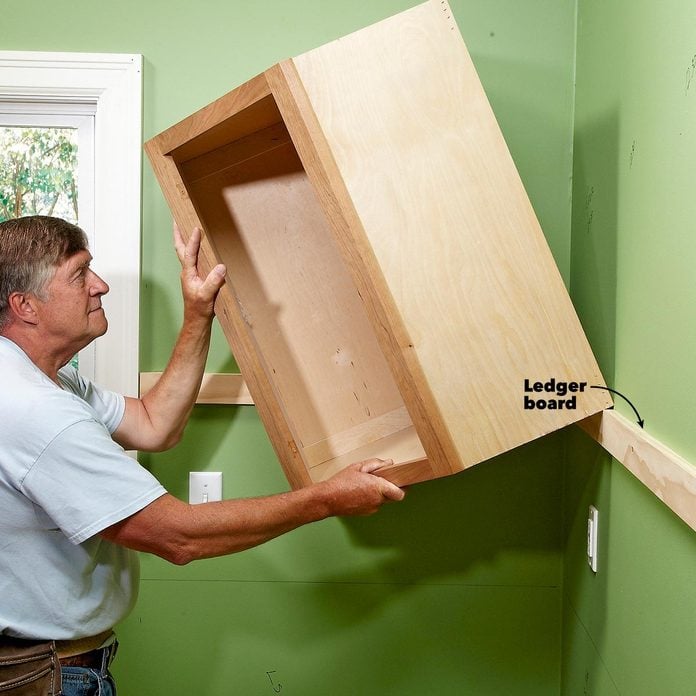
Start With the Upper Cabinets
It’s easier to hang the uppers when you’re not hanging way over the base cabinets. To begin installing top cabinets, rest the uppers on a ledger board—it’ll ensure a nice, straight alignment and eliminate the frustration of holding the cabinets in place while screwing them to the wall. Once your top cabinets are installed, move on to the bottom kitchen cabinets.
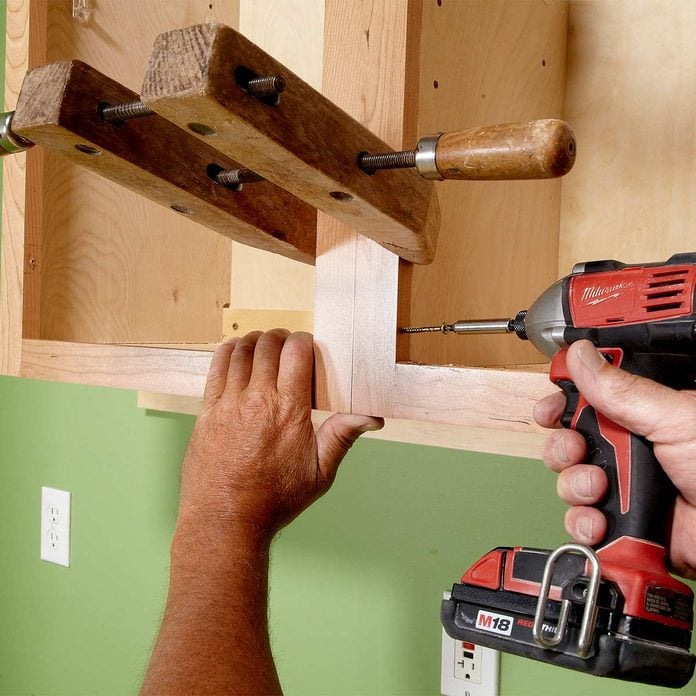
Clamp, Drill and Fasten
When connecting two cabinets to each other, line up the face frames and clamp them together. Both cabinets should be fastened to the wall at this point, but you may have to loosen one cabinet or the other to get the frames to line up perfectly. Hand-screw clamps don’t flex, and less flex means a tighter grip. Predrill a 1/8-in. hole before screwing them together with a 2-1/2-in. screw. Choose the less noticeable cabinet of the two for drilling and placing the screw head.
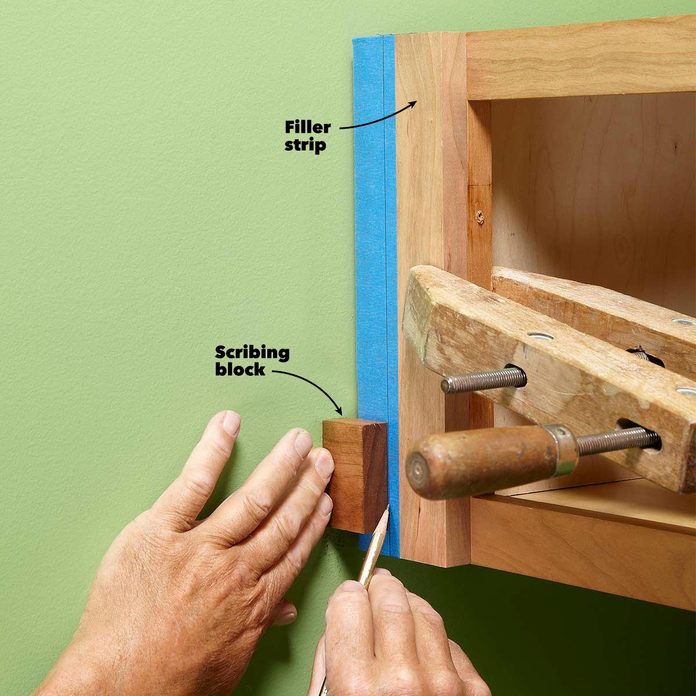
Use a Block of Wood for Scribing
Another step in how to install cabinets is to find the largest distance between the outside of the cabinet and the wall. Take that measurement and make a pencil mark on your filler strip (measure over right to left in this case). Clamp the filler onto the cabinet flush with the inside of the vertical rail. Measure over from the wall to your pencil mark, and make a scribing block that size. Use your block to trace a pencil line down the filler strip. Masking tape on the filler strip helps the pencil line show up better and protects the finish from the saw table.
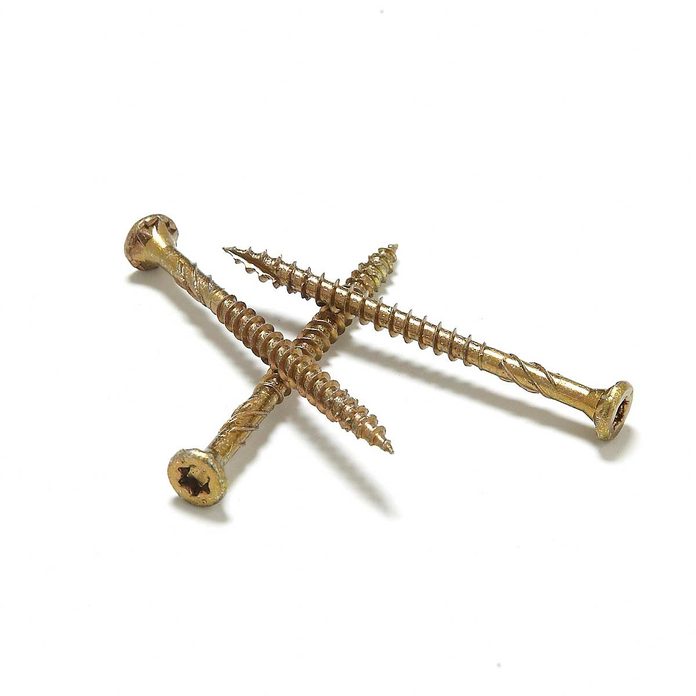
Use Good Cabinet Mounting Screws
Many top cabinet makers prefer GRK’s R4 self-countersinking screw as their go-to cabinet mounting screws. You’ll pay accordingly, but why scrimp on screws when you’re spending thousands of dollars on cabinets? Whatever you do, don’t use drywall screws—they’ll just snap off and you’ll end up with an extra hole. Learn more about the R4 screws at grkfasteners.com.
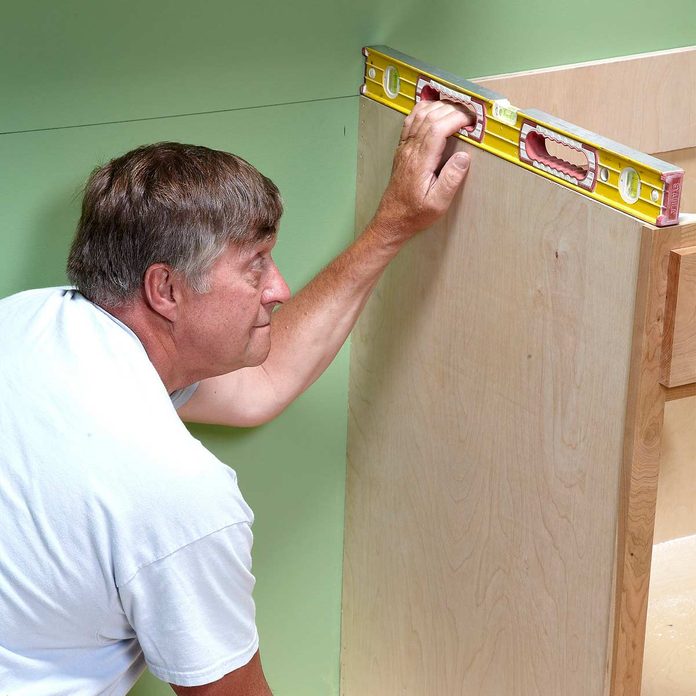
Fasten the Back, Then Shim
Line up the base cabinets with the level line on the wall. Fasten the back of the cabinets to that line. Once the backs of the cabinets are level, use shims to level the sides. Take your time on this step—nobody likes to have eggs roll off a slanted countertop.

Measure the Gap
Measure the gap between the wall and the end cabinets at the top and bottom. Add 1/16 in. to each measurement and draw a cutting line on the backside of a filler strip.

Cut the Filler Strip
Clamp the filler strip and cut it at a 10-degree bevel from the backside so the wide edge of the “keeper” piece faces the front.

Fit and Install the Filler
Test-fit the filler strip and plane the sharp edge of the bevel until it fits perfectly. Set the strip in place, pre-drill and screw it to the cabinet frame.
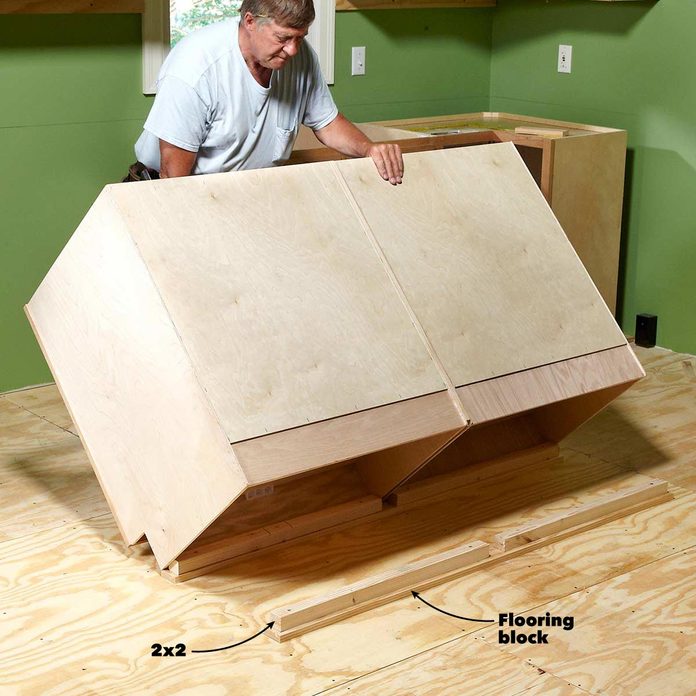
Use 2x2s to Secure Cabinets to the Floor for Kitchen Island Installation
Cabinets that make up islands and peninsulas need to be secured to the floor. Join the island cabinets and set them in place. To begin kitchen island installation, first trace an outline of the cabinets on the floor. Screw 2x2s to the floor 1/2 in. on the inside of the line to account for the thickness of the cabinets. Anchor the island cabinets to the 2x2s with screws. If needed, place flooring blocks under the 2x2s.
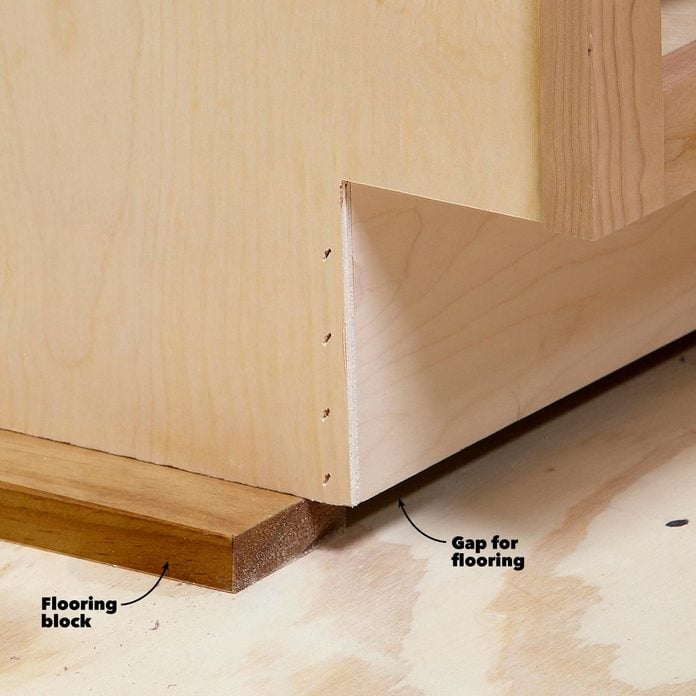
Raise the Cabinets for Flooring
If the kitchen flooring is going to be hardwood or tile, and you’re installing it after the cabinets, you’ll have to raise the cabinets off the floor or the dishwasher won’t fit under the countertop. Use blocks to represent the finished floor height, and add those distances to the guide line for the base cabinet tops. Hold the blocks back a bit from the front so the flooring can tuck underneath. Your flooring guys will love you for this.
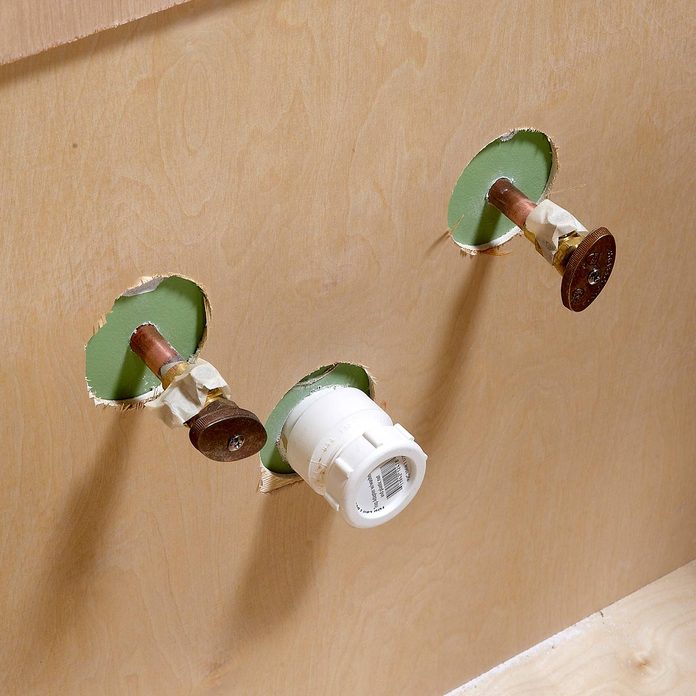
Cut Oversize Holes
Cutting exact size holes for water lines and drainpipes might impress your spouse or customer, but such precision is likely to result in unnecessary headaches for you. Cutting larger holes makes it easier to slide the cabinet into place and provides wiggle room for minor adjustments. No one’s going to notice the oversize holes once the cabinet is filled with dish soaps, scrubbers and recycling bins.
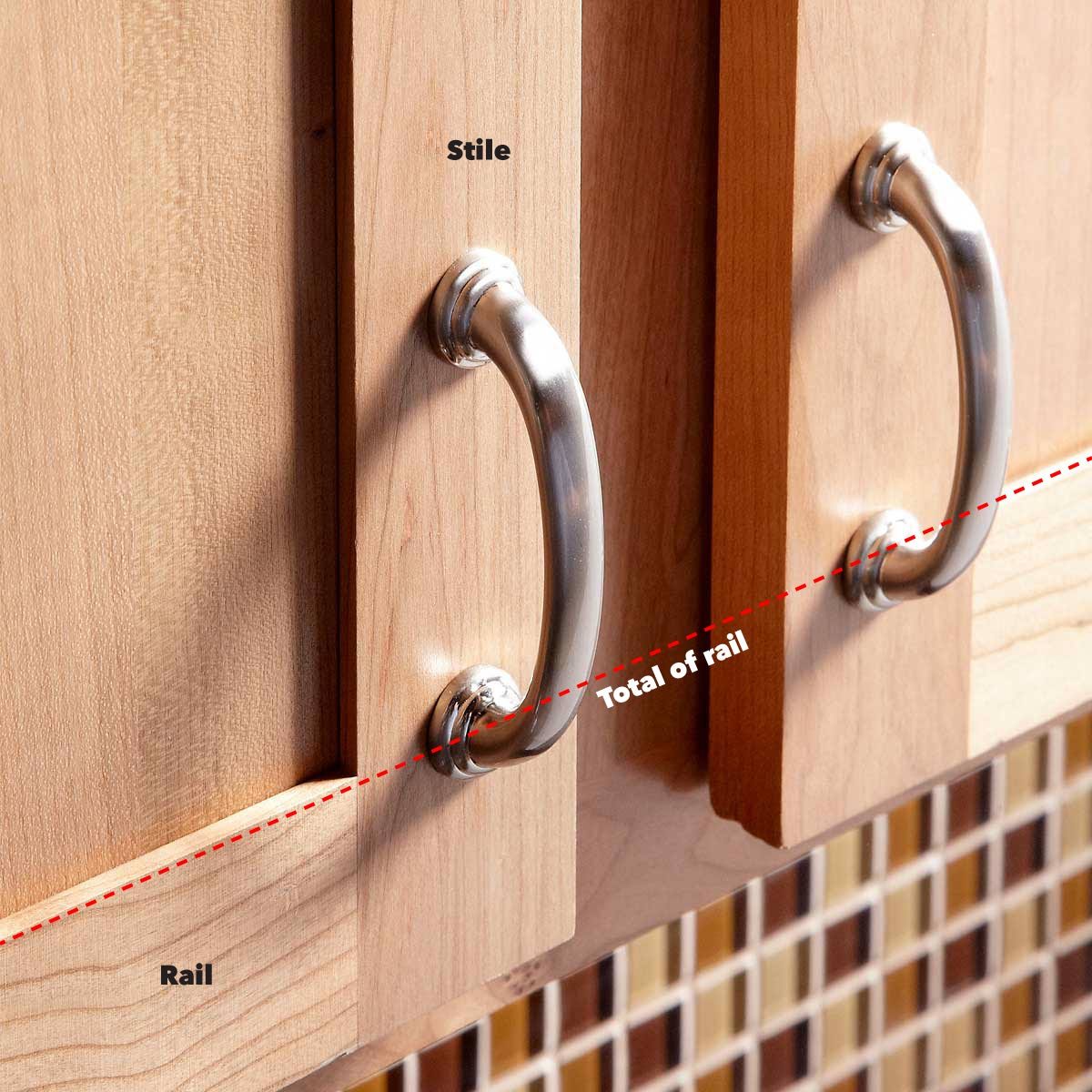
Use the Door Rail as a Guide
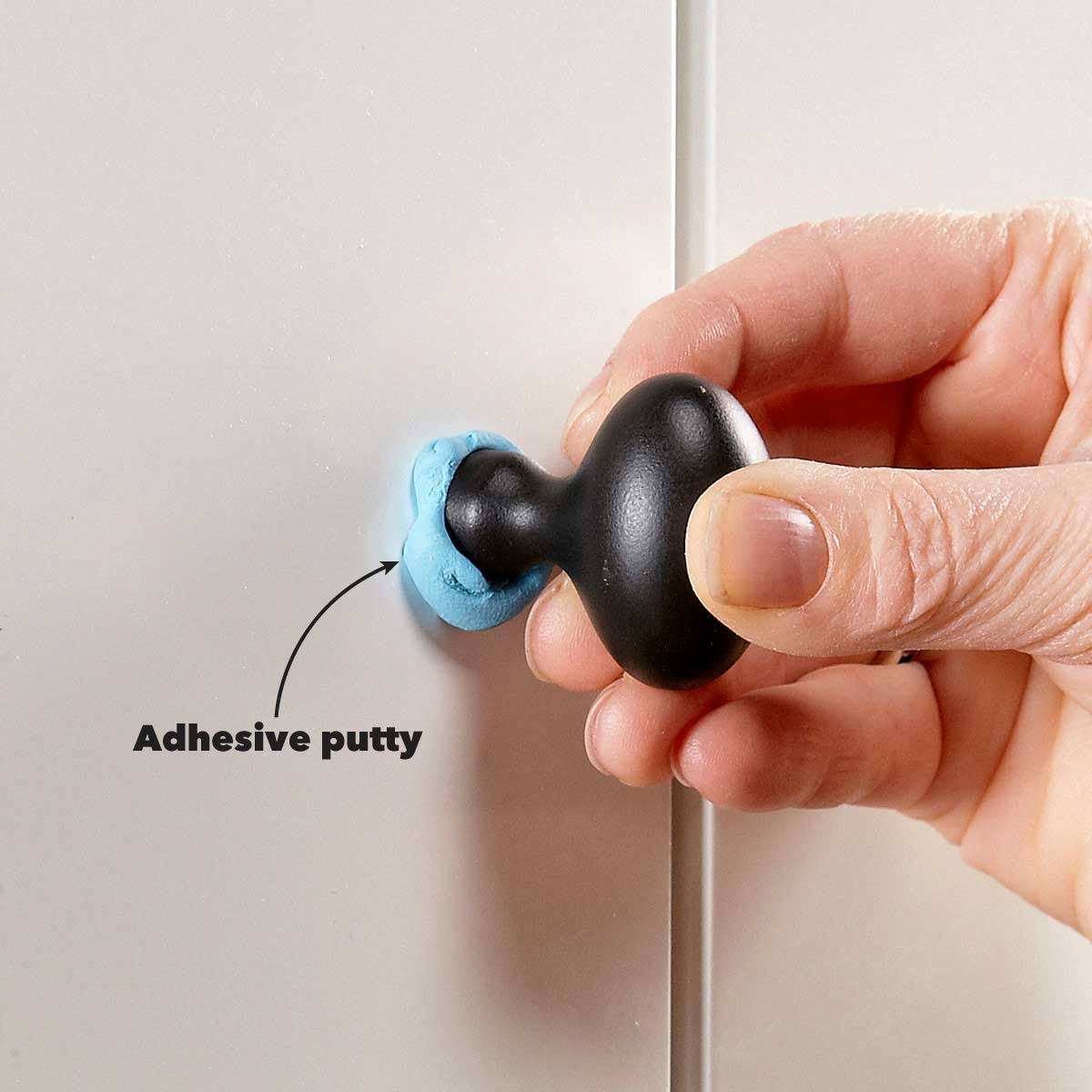
Temporarily Attach the Hardware

Build Your Own Custom Cabinets
Ever dreamed of building your own traditional kitchen cabinets with solid wood and wood veneers? Join Steve Maxwell in How to Build Kitchen Cabinets to learn how to plan, build, and install your own custom kitchen cabinets.